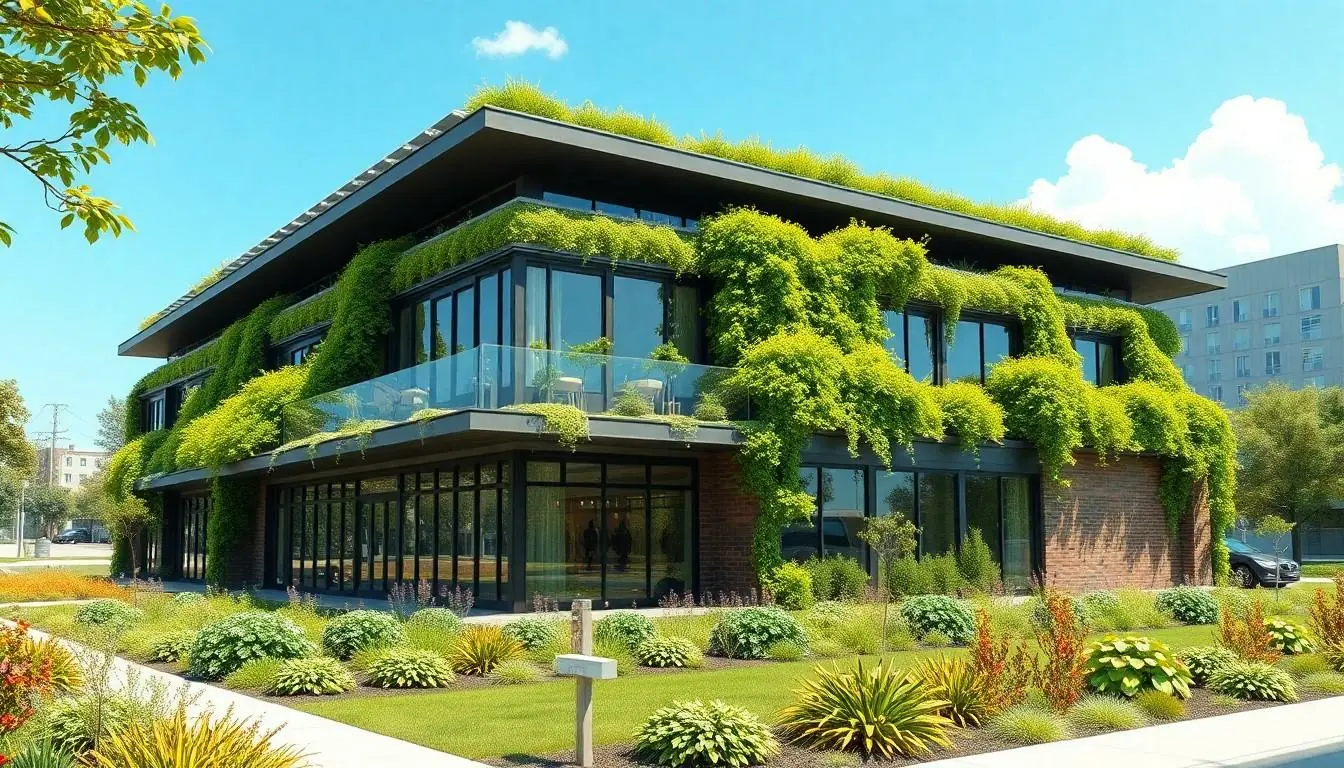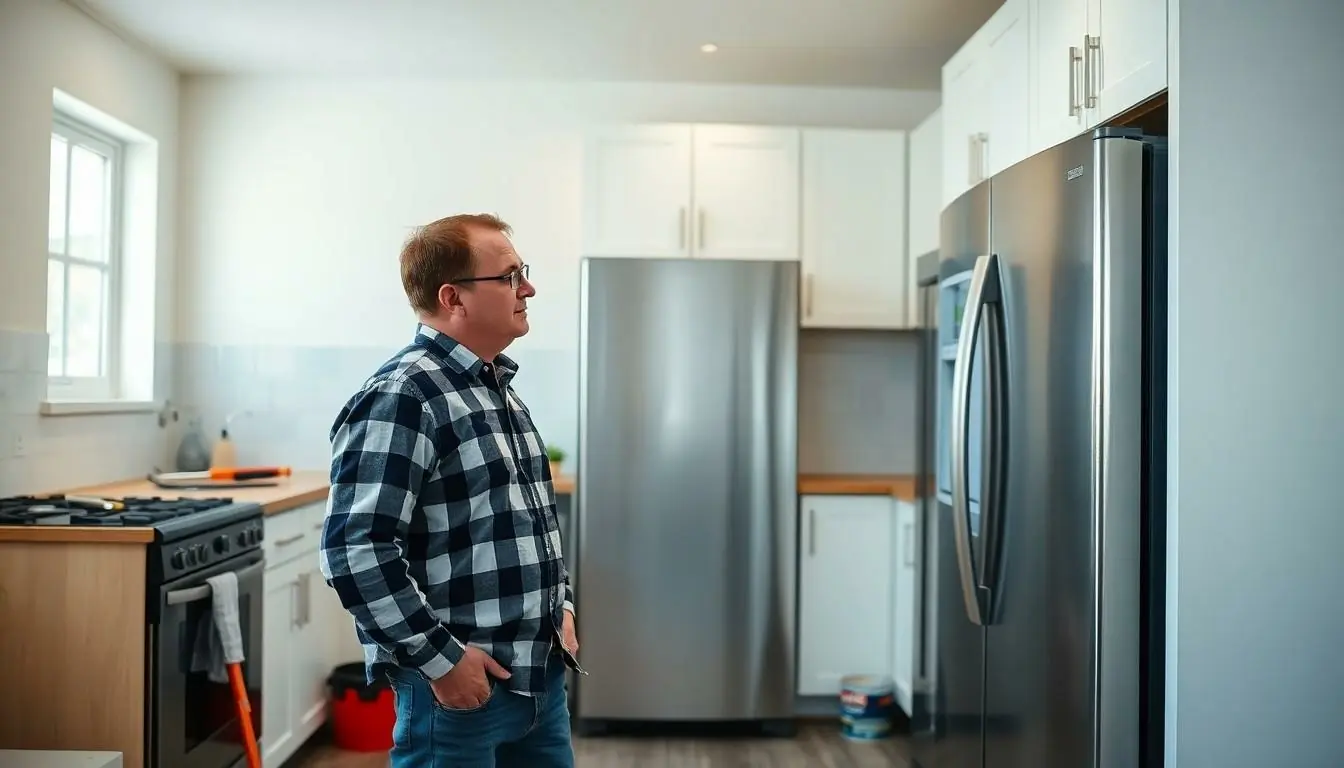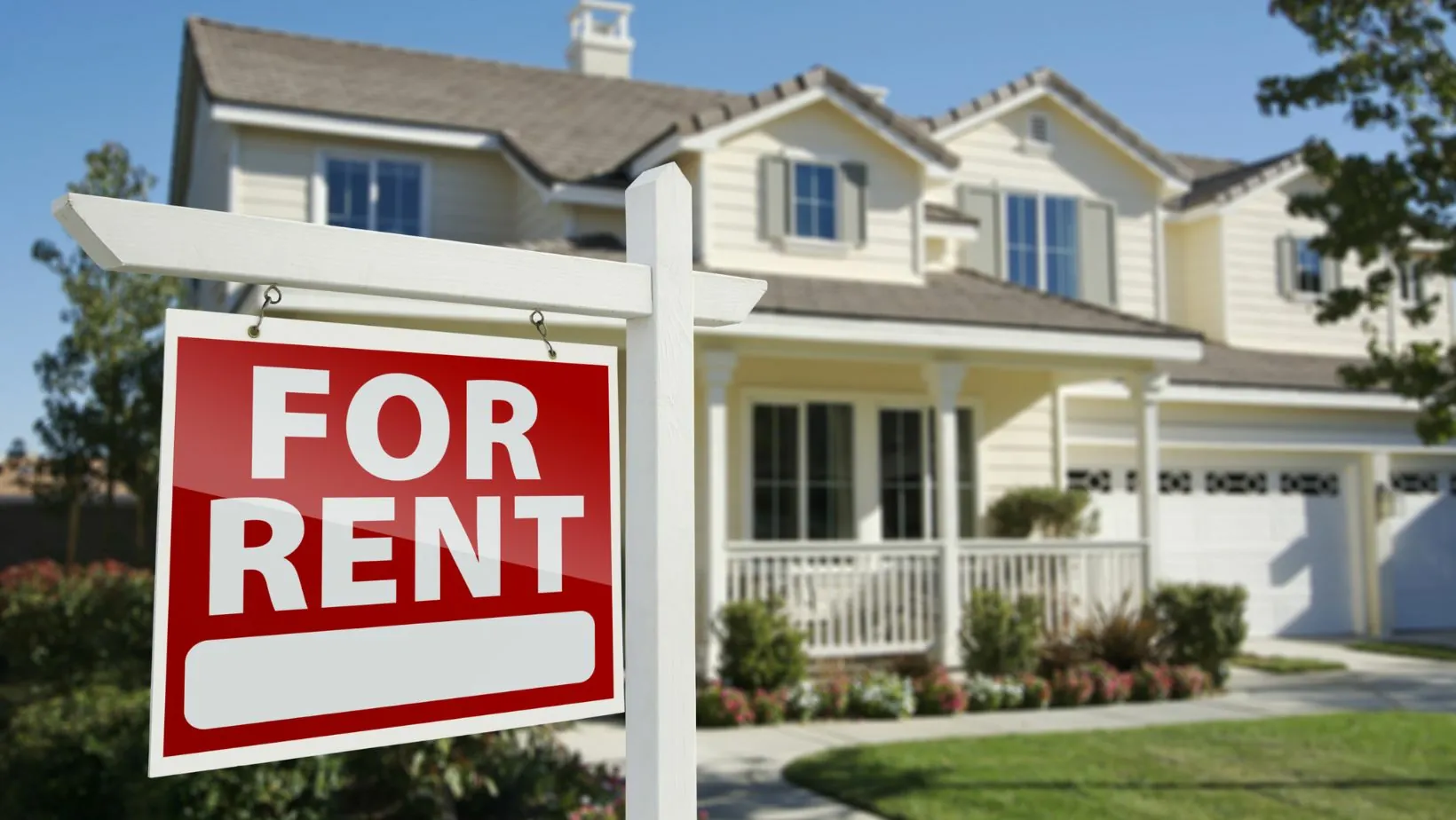Table of Contents
ToggleIn a world where the planet is throwing tantrums like a toddler denied candy, green design architecture steps in like a superhero armed with eco-friendly capes. This innovative approach not only makes buildings look stunning but also helps save the Earth, one sustainable brick at a time. Imagine living in a home that breathes, recycles rainwater, and even tells you when it’s time to water the plants—talk about a multitasking marvel!
Green design architecture isn’t just a trend; it’s a movement that combines style with responsibility. As more architects embrace sustainable practices, they’re proving that eco-consciousness doesn’t have to sacrifice aesthetics. So buckle up as we explore how this exciting field is reshaping skylines and saving the planet, one green roof at a time. Who knew saving the Earth could be so chic?
Overview of Green Design Architecture
Green design architecture emphasizes sustainability in building practices. This approach integrates energy efficiency, environmental conservation, and aesthetic appeal. Architects prioritize reducing the ecological footprint through innovative materials and construction techniques.
Natural lighting plays a significant role in green design. Designers often include large windows and skylights to maximize sunlight, which reduces energy consumption. Furthermore, incorporating energy-efficient appliances enhances functionality while minimizing resource use.
Materials used in green architecture are crucial. Recycled, reclaimed, and sustainable resources help in reducing landfill waste and promote the use of renewable products. Local sourcing of materials supports regional economies and lowers transportation emissions.
Water conservation is another essential aspect. Rainwater harvesting systems and native landscaping techniques help conserve water while promoting biodiversity. They integrate water-efficient fixtures that minimize waste in daily usage.
Indoor air quality remains a fundamental consideration. Utilizing low-VOC (volatile organic compounds) materials improves air quality, ensuring healthier living environments. Effective ventilation systems enhance air circulation, contributing to occupant comfort.
Community engagement shapes successful green design projects. Architects often collaborate with local stakeholders, ensuring designs align with community needs. This inclusive approach fosters support and enhances the overall success of sustainable initiatives.
Green design architecture embodies a holistic strategy. It merges form and function while advocating for environmental responsibility. The future of urban landscapes increasingly relies on this innovative architectural movement, impacting society positively by promoting sustainability and resilience.
Principles of Green Design Architecture

Green design architecture incorporates essential principles aimed at promoting sustainability and enhancing the built environment. Key principles include sustainability, energy efficiency, and materials selection.
Sustainability
Sustainability focuses on creating structures that minimize environmental impact. Designers aim to reduce energy consumption and greenhouse gas emissions through site selection and orientation. Implementing features like solar panels and green roofs supports ecological balance. Rainwater harvesting systems contribute to water conservation, reducing reliance on municipal water sources. Architects prioritize native landscaping to support local biodiversity while minimizing irrigation needs.
Energy Efficiency
Energy efficiency represents a core tenet of green design. High-performance insulation and energy-efficient windows play crucial roles in regulating indoor temperatures. Use of smart technology allows for automated lighting and temperature control, further optimizing energy usage. EnergyStar-rated appliances contribute to lower energy consumption. By maximizing natural light, architects minimize reliance on artificial lighting throughout the day, resulting in substantial energy savings.
Materials Selection
Materials selection greatly impacts a building’s ecological footprint. Sustainable materials, like reclaimed wood and recycled steel, reduce waste and preserve natural resources. Low-VOC paints and finishes improve indoor air quality and reduce harmful emissions. Designers often choose local materials to decrease transportation-related carbon emissions and support regional economies. Selecting durable materials enhances a building’s longevity, resulting in reduced resource use over time.
Benefits of Green Design Architecture
Green design architecture offers numerous benefits that extend beyond mere aesthetics. This innovative approach significantly improves environmental sustainability while enhancing quality of life.
Environmental Impact
Green design architecture contributes to reduced carbon footprints. By utilizing eco-friendly materials and energy-efficient systems, designers minimize harmful emissions. Natural light maximizes through strategic building orientations and large windows, reducing reliance on artificial lighting. Water conservation techniques, such as rainwater harvesting, contribute to sustainable water management. Additionally, the use of low-VOC materials improves indoor air quality, promoting healthier living spaces. Overall, this architecture embodies a commitment to protecting the environment while meeting current and future needs.
Economic Advantages
Economic benefits from green design architecture are substantial. Projects often experience lower energy costs due to efficiency measures like high-performance insulation and EnergyStar-rated appliances. Financial incentives, such as tax credits and grants, support green building initiatives. Property values frequently increase as demand grows for sustainable homes and offices. Furthermore, operational savings arising from reduced utility costs enhance long-term profitability. Companies opting for green designs often attract environmentally conscious consumers, boosting market competitiveness.
Challenges in Implementing Green Design Architecture
Implementing green design architecture poses several challenges for architects and builders. One primary issue involves the initial costs associated with sustainable materials and technologies. Budget constraints often lead to compromises, making it difficult to fully adopt eco-friendly solutions.
Limited availability of sustainable resources also complicates the process. In certain regions, access to recycled materials or energy-efficient products may be restricted, hindering project feasibility.
Moreover, building codes and regulations can create obstacles. Some existing frameworks do not accommodate innovative green strategies, requiring architects to navigate bureaucratic hurdles. This challenge often delays project timelines and increases frustration.
Another significant concern is the lack of public awareness. Many stakeholders may not recognize the long-term benefits of green design, leading to skepticism about its value. Proper education on sustainable architecture can foster greater acceptance and support.
Resistance to change within the construction industry further complicates efforts. Some professionals prioritize traditional building methods over sustainable practices, making it hard to shift toward greener alternatives.
Finally, ongoing maintenance and operational costs of green buildings require careful consideration. While initial investments may be high, reducing long-term expenses through energy efficiency and resource conservation becomes essential.
Each of these challenges reveals the complexities architects face in promoting environmentally responsible design. By addressing these issues, the industry can work towards realizing the full potential of green architecture.
Innovations in Green Design Architecture
Leading architects embrace cutting-edge technologies to enhance green design architecture. Biophilic design integrates natural elements into buildings, creating connections between occupants and nature. Smart building systems optimize energy use through automation, which reduces waste and increases efficiency. Furthermore, advancements in solar technology allow for more efficient energy harvesting. Photovoltaic glass represents another breakthrough that merges aesthetics with functionality, allowing sunlight to power buildings without sacrificing style.
Utilization of modular construction methods promotes sustainability by reducing waste and construction time. Prefabricated components streamline assembly on-site, minimizing disruptions and ensuring quality control. Designers increasingly prioritize sustainable landscaping, implementing green roofs and living walls that enhance thermal performance while providing habitat for urban wildlife.
The adoption of engineered wood products exemplifies innovation in materials selection. Cross-laminated timber offers strength and durability while storing carbon, contributing to reduced emissions in the construction phase. Low-impact development focuses on sustainable drainage solutions, addressing water management through techniques like permeable pavements and bioswales.
New certifications and standards for green buildings emerge, encouraging accountability and transparency in environmental design. Programs such as LEED and BREEAM provide frameworks for assessing sustainability, equipping architects with tools to communicate the benefits of green design effectively. A stronger focus on community engagement ensures that innovations respond to local needs, fostering a collaborative approach between architects and stakeholders.
Green design architecture continues to evolve, driven by research and a commitment to improving the built environment. Enhanced indoor air quality through advanced ventilation systems and low-VOC products supports occupant health. Architects increasingly view green design not just as a practice but as a commitment to future-sustainable living.
Green design architecture stands at the forefront of creating a sustainable future. By merging beauty with eco-consciousness it transforms the way buildings interact with their environment. This innovative approach not only enhances aesthetics but also significantly reduces ecological footprints.
As architects continue to embrace cutting-edge technologies and sustainable practices the impact of green design will only grow. Community engagement remains crucial ensuring that these designs meet local needs while promoting a healthier living environment. With ongoing advancements in materials and methods green architecture is set to redefine the built landscape for generations to come.







